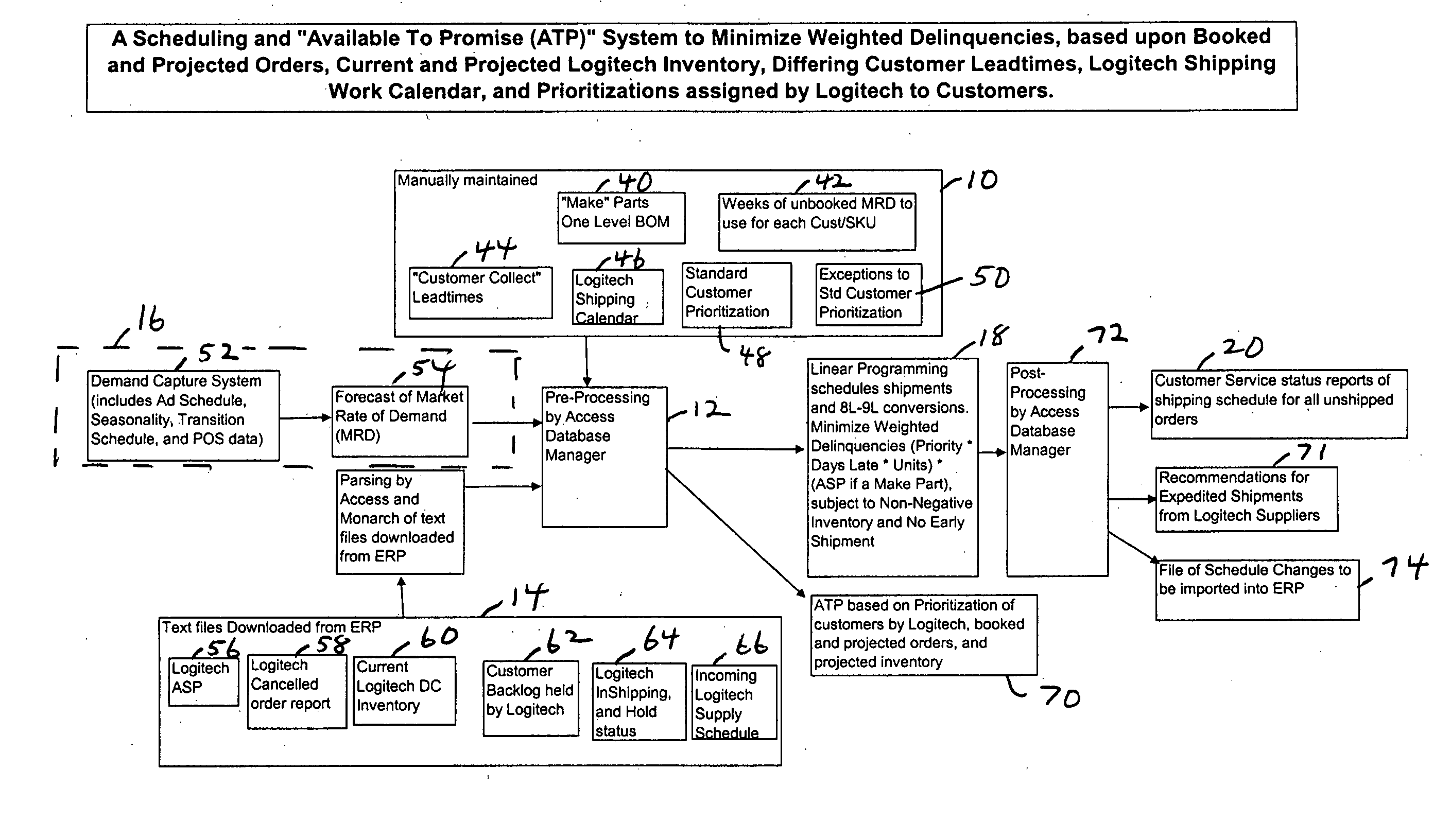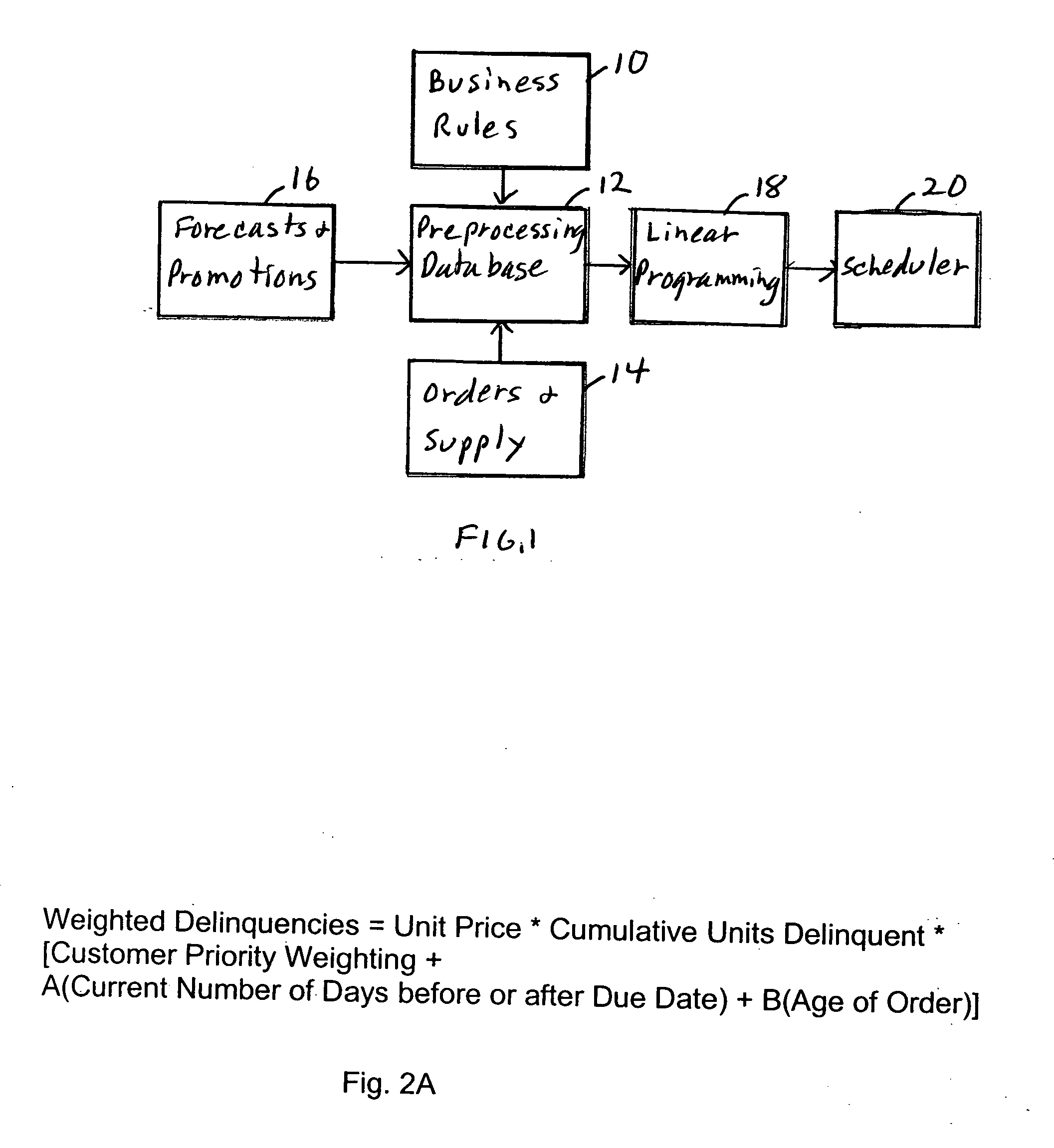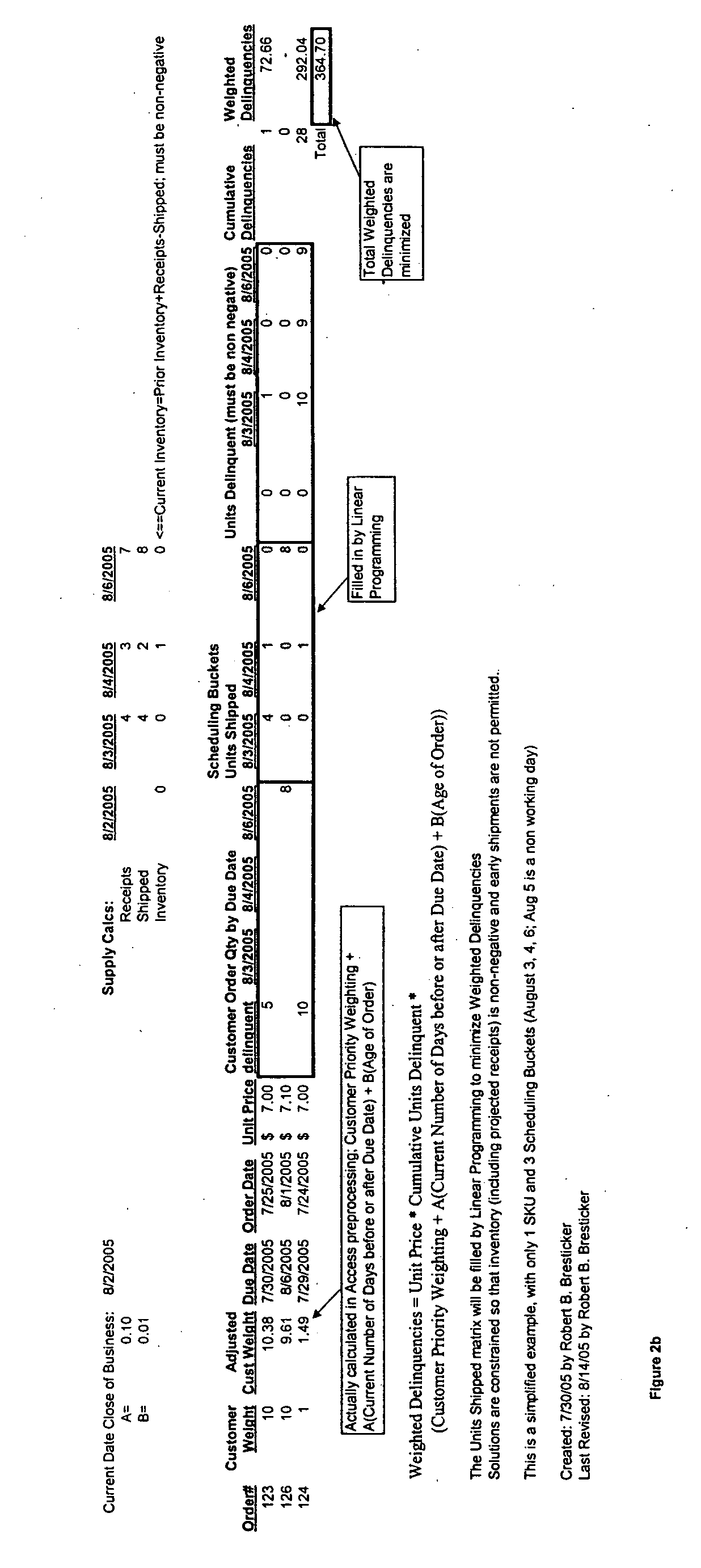Constraint based order optimization system and available to promise system
a technology of constraint and order optimization, applied in the field of computer systems and software, can solve the problems of losing priority to a lower priority order, which would otherwise be delayed for several weeks, and achieve the effect of improving the efficiency of the system
- Summary
- Abstract
- Description
- Claims
- Application Information
AI Technical Summary
Benefits of technology
Problems solved by technology
Method used
Image
Examples
Embodiment Construction
Overall System
[0024]FIG. 1 shows a simplified view of an embodiment of the invention. A number of manually maintained business rules 10 are fed to a preprocessing database 12. In addition, customer orders and inventory supply files 14 are provided to database 12. Additionally, forecasts and promotions 16 may be provided to preprocessing database 12. The relative priorities of each order are established within the preprocessing database. The preprocessed data is then provided to a linear programming system 18 which does the scheduling so that the delays for all customers, in order of priority and price (Weighted Delinquencies), are minimized. After further processing, the information is provided to a scheduler 20 for allocation of the inventory among the customer orders. The business rules include priorities for different customers as well as customer promotions, the amount of forecasting to be used by each customer, and other customer specific information.
Linear Programming Algo...
PUM
 Login to View More
Login to View More Abstract
Description
Claims
Application Information
 Login to View More
Login to View More - R&D
- Intellectual Property
- Life Sciences
- Materials
- Tech Scout
- Unparalleled Data Quality
- Higher Quality Content
- 60% Fewer Hallucinations
Browse by: Latest US Patents, China's latest patents, Technical Efficacy Thesaurus, Application Domain, Technology Topic, Popular Technical Reports.
© 2025 PatSnap. All rights reserved.Legal|Privacy policy|Modern Slavery Act Transparency Statement|Sitemap|About US| Contact US: help@patsnap.com



